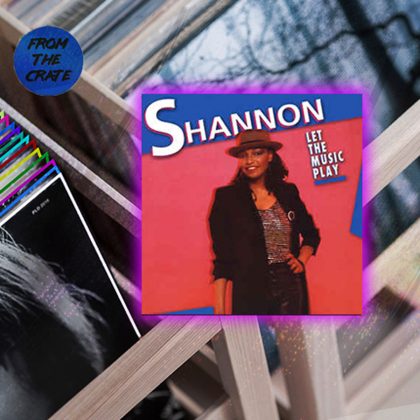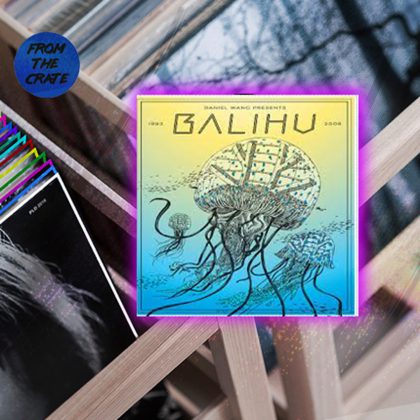Donna Summer “I Feel Love”
The birth of our underground brand, Factory 93, not only brought on an adrenaline rush reminiscent of the renegade warehouse-era of raving—on which Insomniac was founded—but it also had us thinking back to all the people, places and parties that made this whole operation possible. And with that came a burning desire to crack open our collection and dust off the classic records we couldn’t live without. Through our From the Crate series, we’ll be breaking out both seminal and obscure cuts alike, imparting some knowledge in the process.
In the summer of 1977, Brian Eno brought a brand-new disco single into Berlin’s Hansa Studio, where he was working on David Bowie’s album “Heroes.” He insisted that Bowie listen. “This is it—look no further,” Eno told him. “This single is going to change the sound of club music for the next 15 years.”
Eno was only partly right, because—forget about mere “club music”—Donna Summer’s “I Feel Love” changed the sound of pop permanently, and it continues to do so. The record’s hypnotic synth arpeggios, dramatic robo-percussion, and immersively erotic vocal would inform just about every kind of modern style, from disco and new wave to trance and EDM—not to mention the sexed-up rhythms of house and the automated fantasias of techno. It’s even been honored by the US government: In 2012, the Library of Congress inducted “I Feel Love” into its National Recording Registry of “culturally, historically, or aesthetically significant” spoken-word and musical recordings.
The track was featured on Summer’s album I Remember Yesterday, which was produced by Pete Bellotte and the legendary Giorgio Moroder. But they didn’t set out to revolutionize anything. “We wanted to do an album—a concept album, actually—where we would have some music of the ‘50s… then the ‘60s, the ‘70s,” Moroder tells Insomniac’s Wide Awake Stories podcast. “Then we thought, ‘Okay, how would a song sound if it was a future song? How would that song sound in 10 years, or 20 years?’”
The first rule, they decided, is that all the music should be computer-generated. Moroder and Bellotte had already made extensive use of the Moog synthesizer on their production of Chicory Tip’s “Son of My Father,” a British #1 in 1972. The duo began working with Donna Summer two years later, and although they incorporated synthesizers into her music on their third LP together—1976’s A Love Trilogy— traditional live guitar, bass and drums still formed the bedrock of Summer’s grooves.
But 1977 was a major year for the synthesizer’s incursion into dance-ready pop. That was the year of all-synth floor-fillers like Kraftwerk’s Trans-Europe Express and Space’s “Magic Fly,” as well as Parliament’s “Flash Light,” whose bassline, played on a Moog, would revolutionize R&B. Moroder, Bellotte and Summer decided to finish I Remember Yesterday with a track that did the same.
“I had thought I would create every instrument using the Moog,” Moroder says. “I started with the bassline, which was easy. But then we needed a hi-hat, a snare, kick, all kinds of percussion, and that was all a little, let’s say, more difficult.”
To generate the track, Moroder and Bellotte called in engineer Robbie Wedel. “He came in with four cases containing the Moog and set it all up,” Bellotte told Sound on Sound in 2009. Moroder took it from there: “I simply instructed him about what programmings I needed,” he told NME in 1978 (quoted in a 2012 Guardian piece). “I didn’t even think to notice that, for the large audience, this was perhaps a very new sound.”
Despite the obvious futurism of “I Feel Love,” Moroder thought back to classic rock ‘n’ roll when he was mixing the track. “I said, ‘Okay, let’s do what the Beatles did with the first stereo, where they had everything left, everything right—no middle,’” Moroder tells Wide Awake Stories. “I put the bass, the original, on the left-hand side, and the delay on the right.” Summer added a sparse lyric that enhanced the track’s agog feel. The minute he heard Summer sing it, says Moroder, “I loved it.”
They didn’t necessarily expect the world to love it. “It didn’t feel at all revolutionary at the time,” says Bellotte. “We just thought it was a decent track.” But when they sent it to their record label—Casablanca, in Los Angeles—President Neil Bogart had other ideas. “Bogart called back straight away and said, ‘The single is “I Feel Love.” It needs three edits, and these are the edits,’” recalls Bellotte. “Doing these immediately improved the fluidity of the track to no end. He was that kind of a record man.”
“I Feel Love” hit #1 in the UK and number six in the US, and it was more than just a radio hit. “Two or three years later, when I worked with David Bowie on the movie Cat People,” Moroder says, “he told me the story that they were in Berlin recording the new album with Brian Eno, and the aim there was to find a new sound. Supposedly, Brian Eno came into the studio with a record and said they would forget the new sound: ‘Giorgio found it already.’”
Bowie and Eno weren’t the only rockers whose jaws hit the floor. In May 1978, during a benefit show at CBGB’s, Blondie covered “I Feel Love,” accompanied by guitarist Robert Fripp (who, not coincidentally, had played on Bowie’s “Heroes”; you can hear it here). The New York Times’ John Rockwell wrote that the cover “showed that there need be no gulf between punk and disco after all.”
“It’s now 30 years, or even more than 30, and you still hear the song,” Moroder says. “Some EDM dance songs are kind of inspired [by it]—especially by that driving thing.” But, he adds, “To get that sound, you definitely need to old Moog. And because it was a little out of tune all the time—it was precise because it was triggered by a code—but a little bit out of tune… it always moves a little bit.” Unless you’re on the dancefloor when “I Feel Love” comes on. Then you move a lot.





